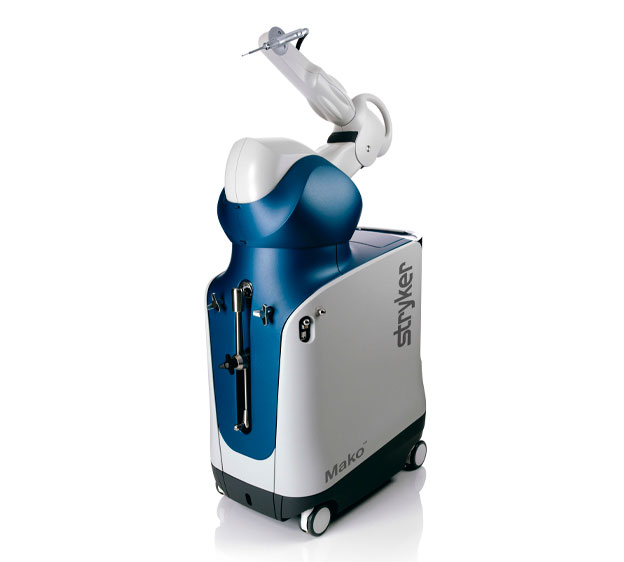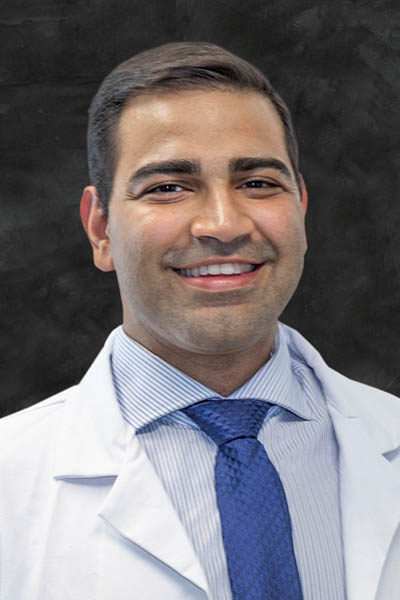
From package-delivering drones to burger-flipping fry cooks, robotic technology has quickly found its way into the American workplace — including hospital operating rooms.
It has been more than 10 years since Beaufort Memorial became the first healthcare provider in the area to offer surgeries with the da Vinci system, the most widely used robotic surgical system in operating rooms today that we use for a range of general and gynecological surgeries. In late 2019, we added the Mako Robotic Arm-Assisted Surgery System to our suite of surgery services, allowing our orthopedic surgeons to provide minimally invasive knee replacements to patients with joint disease.
Read More: Finessing Knee Replacements With a Robotic Arm
Surgeons Still Run the Show
One of the biggest misconceptions people have about robotic surgery is that the robots, not the surgeons, are in control, but it really is the surgeon who will be removing their gallbladder or performing their knee replacement.
It’s important to understand that the Mako Robotic-Arm does not perform the actual surgery, make decisions on its own or move without the surgeon guiding it. The physician will still be your surgeon, but the Mako provides the perfect combination of robotic precision and human knowledge, experience and touch.
In robotic surgeries, the doctor sits at a computer console a few feet from the operating table, directing the movement of the robot's wristed instruments using foot and hand controls.
Read More: Move Better on New Knees: Mako Knee Replacements
Complex Surgeries, Better Patient Results
At Beaufort Memorial, orthopedic surgeons use Mako to resolve knee and hip pain associated with various forms of arthritis. Before surgery, a CT scan is taken of the joint to create a 3D virtual model of the patient’s anatomy. The surgeon uses the model to evaluate bone structure, disease severity, joint alignment, and surrounding bone and tissue to determine the optimal size, placement and alignment of the implant components.
During the operation, the surgeon follows the preoperative plan, guiding the robotic instrument arm to remove only the diseased bone. A virtual boundary established by the robot prevents the surgeon from crossing the bone field into surrounding tissue, preserving the healthy bone and ligaments around it. With the advanced robotic system, orthopedic surgeons are able to implant the prosthetic components with greater precision resulting in a better functioning joint.
“The Mako robot has been a game changer for knee replacements,” says Dr. Vandit Sardana, a board-certified, fellowship-trained orthopedic surgeon at Beaufort Memorial Orthopaedic Specialists. “The results have been amazing. Patients are recovering faster. We are seeing a similar effect with hip replacements.”
Clinical studies have shown the robotic surgery system improves outcomes by allowing the surgeon to customize the placement and alignment of the implant components to the patient’s unique anatomy, providing more natural movement of the joint and reducing the risk of hip dislocation following surgery.
“We used to eyeball the placement of the prosthetic cup that goes in the hip socket,” says Dr. Sardana. “Now we can place it more accurately, which ensures optimal function and a more natural feel.”
Improved Dexterity
Another robot in use at Beaufort Memorial, the da Vinci is used to perform hysterectomies and other gynecological procedures, ventral and inguinal hernia repairs, partial nephrectomies (an organ-sparing procedure for patients with kidney cancer), colon resection (which involves the removal of part or all of the colon to treat various diseases), and gastrointestinal surgeries, including Nissen fundoplication for the treatment of severe acid reflux disease.
“While Nissen fundoplication can be performed laparoscopically, it’s technically challenging to do because the surgeon has to suture inside the body,” says Dr. Deanna Mansker, board-certified surgeon at Beaufort Memorial Surgical Specialists. She likens it to using chopsticks to tie a knot. “You’re working around a lot of critical structures like the heart, lungs and esophagus, so it helps to have an instrument that allows you to be more precise.”
In addition, robotic surgery often prevents healthy tissues around an incision site from damage during the procedure. It also leads to quicker recovery and less pain, blood loss and scarring.
If you have knee pain, request an appointment with one of our orthopedic surgeons to discuss whether Mako surgery might help you.


